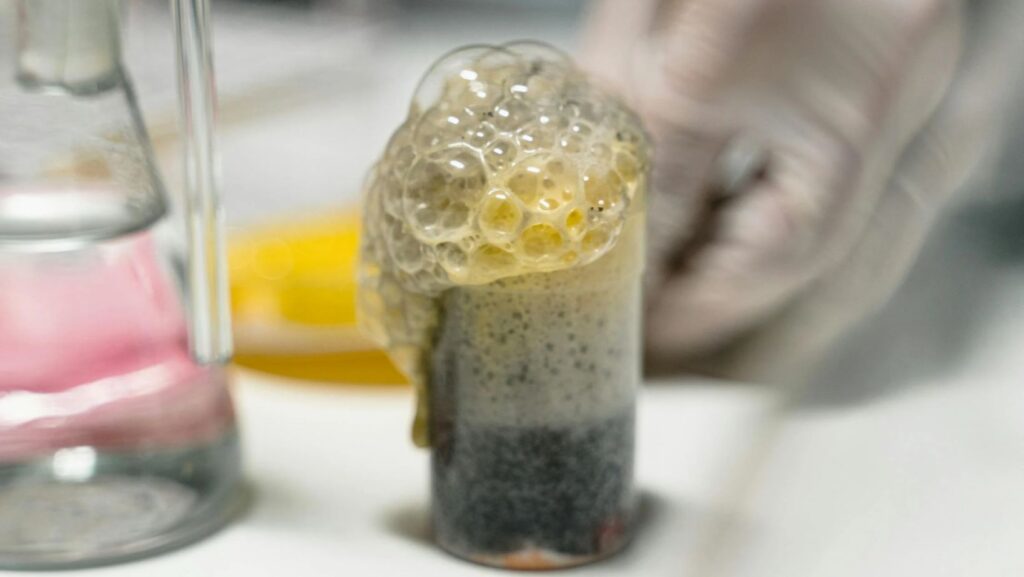
What Are PFAS?
They’re actually per- and poly-fluoroalkyl substances (PFAS), some synthetic chemicals widely known as “forever chemicals” and also extensively used because of their persistence in the environment and living organisms, even in humans.
It was initially developed in the 1940s and became quite pricey for its resistance to heat, water, and oil, making these compounds integral to products like nonstick cookware, waterproof fabrics, food packaging, and firefighting foams like the aqueous film-forming foam (AFFF).
However, its known durability came with great costs for those who used it and were exposed to its harsh reality. According to research, PFAS do not break down naturally, allowing them to accumulate in soil, water, and living organisms, raising significant concerns about their impact on human health and Mother Nature.
How Does PFAS Enter the Human Body?
With so many studies and findings, it was found that PFAS contamination spread through several channels, like:
Drinking Water
That’s why communities near industrial facilities or military bases using firefighting foam (aqueous film-forming foam, or AFFF) are at heightened risk due to these groundwater contaminations.
Food Sources
It might be best to at least verify where your food and its raw materials come from, as consuming them like fish from contaminated water or food grown in PFAS-affected soil can lead to exposure and enumerable health horrors.
Everyday Products
Also, items like stain-resistant carpets, grease-proof food wrappers, and nonstick cookware can leach PFAS into the environment, your home, and your body.
The Health Impacts of PFAS Exposure
While advocating for a longer and healthier life, still you can never be sure about the basic commodities that may cause you health issues later. It’s best, therefore, to be aware of some scientific studies, like linking prolonged PFAS exposure to various illnesses, that they may cause:
Cancer Risks
Some PFAS compounds, like PFOA and PFOS, are classified as possible human cancer-causing substances. Exposure to them has been associated with kidney and testicular cancers over the years.

Hormonal Disruption
Also, PFAS might just interfere with your endocrine system, impacting thyroid function and hormone regulation without you being aware of it.
Immune System Suppression
Much research posits that PFAS may weaken the immune system, reducing your body’s ability to fight infections and could render futile the efficacy of vaccines.
Reproductive and Developmental Effects
More discoveries said that High PFAS levels during pregnancy are linked to low birth weights, developmental delays, and potential complications and fertility issues.
Metabolic Concerns
Experts also say that PFAS exposures are also associated with high cholesterol, liver damage, and increased risks of obesity and diabetes in some individuals.
The Link Between PFAS and Military Base Contamination
Many experts found that one of the most significant sources of PFAS contamination is military bases, where AFFF has been widely used in firefighting training and emergency response activities. All these led to extensive groundwater pollution, posing serious health risks from AFFF exposure to people in nearby communities.
Many legal actions and lawsuits against manufacturers and responsible parties spotlight the ongoing fight for accountability and compensation for the exposed and affected sufferers.
This recent surge in AFFF lawsuits is proof enough of the growing concern and recognition of PFAS as a critical public health concern in many states. These cases have brought attention, from affected individuals to organizations and government agencies, to the negligence surrounding PFAS management and its impact on military families and civilians living near contaminated facilities and areas.
Efforts to Address the PFAS Crisis
Today, governments, researchers, and advocacy groups all over the world are taking action to mitigate PFAS-related risks, like:
Regulation and Legislation
More initiatives from the U.S. Environmental Protection Agency (EPA) have tightened regulations on PFAS in drinking water, proposing stricter standards to limit exposure in many affected communities. Many states and cities now have enabling laws banning PFAS in specific products, such as food packaging and cosmetics.
Litigation
Ongoing high-profile lawsuits against PFAS manufacturers aim to hold them accountable for the environmental and health damages they’ve caused or created. These legal actions, lawsuits, and efforts are advancing awareness and compensation for affected individuals and communities.
Innovative Solutions
Studies and scientists are exploring more methods to break down PFAS, such as advanced filtration systems and microbial degradation, offering people hope for a cleaner and healthier future.
Why Awareness Matters
Knowing and understanding how PFAS works its way into your home, as well as all its health impacts, empowers you to protect yourself and your family and advocate for a better tomorrow. Some simple steps like using water filters certified to reduce PFAS, avoiding products known to contain these chemicals, and supporting regulations can help you build healthier tomorrows.

For those directly impacted, however, like individuals near military bases or industrial sites, resources like legal counsel and community action groups can offer you brighter pathways to justice and remediation.
The Path Forward
These wellness-affecting subjects like PFAS contaminations are quite complex, far-reaching issues that demand global attention and solutions.
By bringing them to the open and addressing the risks, supporting affected communities, and pushing for accountability, people are more able to work toward reducing the harmful impact of these “forever chemicals.”












